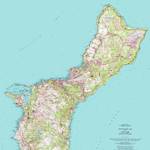Cape Lion Extinct
circa 1865 CE • South Africa
"Records show that these lions were common near Cape Town itself until the end of the 17th century. Even in the 18th century the Cape lion was not uncommon in the vicinity of Cape Town, although declining. The first British occupation of the Cape Colony began in 1795 and up until the 19th century Cape lions were found by hunters away from the immediate neighbourhood of Cape Town, especially on the Karoo and in the Uitenhage. The Cape lion's numbers kept declining and eventually it vanished. The exact year of extinction of the Cape Lion is unknown, although it is said that the last Cape Lion seen in the Cape Province was killed in 1858, and the last of the subspecies was hunted down in Natal by one General Bisset in 1865 . . . It is believed that most of the lions found in Southern Africa were a subspecies known as the Cape Lion (or black-maned lion of the Cape) . . . It now seems probable that the Cape lion was only the southernmost population of the extant southern African lion."
Peter Maas, "The Extinction Website - Species Info - Cape Lion," PeterMaas.nl, 3 March 3, 2010.
Image: Panthera Leo Melanochaitus, Rembrandt Harmenszoon van Rijn, between 1650 and 1652.


Learn about Maya Lin’s fifth and final memorial: a multi-platform science based artwork that presents an ecological history of our world - past, present, and future.

Discover ecological histories and stories of former abundance, loss, and recovery on the map of memory.

Learn how we can reduce our emissions and protect and restore species and habitats – around the world.

See how art can help us rethink the problems we face, and give us hope that each one of us can make a difference.

Help make a global memorial something personal and close to home. Share your stories of the natural world.


